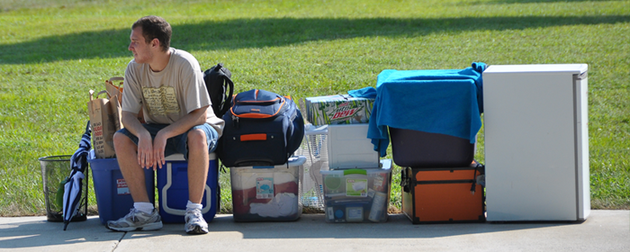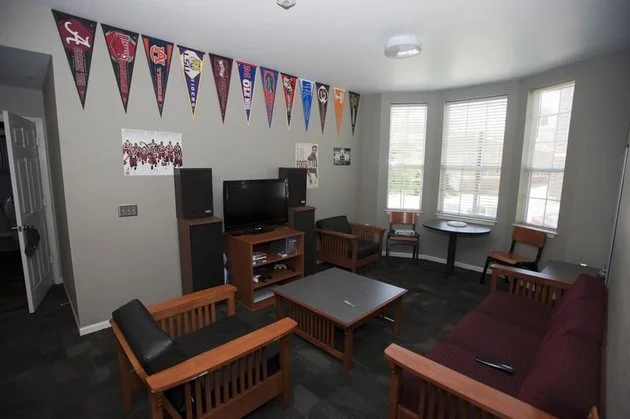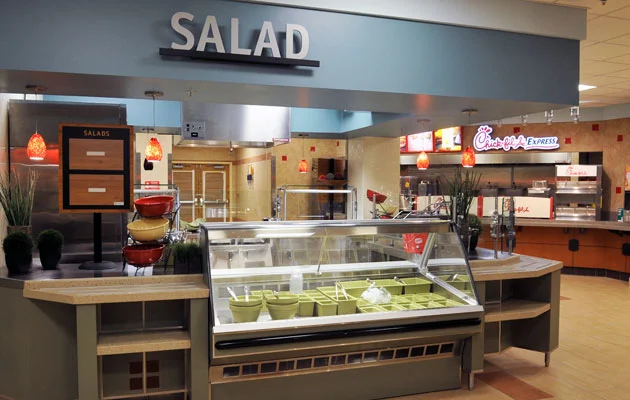Dorm Survival Guide: What Options Are Available?
November 11, 2017
EasyUni Staff
In the first part of this guide, we discuss the basics of dorm living. The first thing to know and understand is what the different options and facilities are available to you.

(source:vinu.edu)
There are many different types of rooms and residences offered at every university. Their names and facilities vary from university to university. Halls at one university may have the same facilities and style as residence colleges at another university. Another thing to note is that American universities also have fraternity and sorority houses on campus.
Generally, there are 5 ways in which campus accommodations vary:

(source:studentslife101.com)
1. Occupancy
A dorm room is a common term for a room that is offered by campus housing. This all-encompasing term covers both single/individual rooms and shared rooms. Double rooms are usually larger than single rooms, but some people may be uncomfortable sharing a living space with a stranger.

(source:housing.ua.edu)
2. Grouping
Whether or not you are sharing a room, you will most definitely be living with other people at the dorms. Your room, single or double, could be an independent room in a corridor of rooms with shared bathrooms and kitchens, or it could be grouped into a suite or apartment of 3-5 rooms. In an apartment or suite, you will share your living room, bathroom and kitchen with only the other people in your suite. In an independent room, these facilities may be available on a per floor or building basis instead.

(source:ummchealth.com)
3. Meal Plans
Some dorms come with compulsory meal plans, some have optional meal plans, and others don’t offer any. While there will be plenty of cafeterias and food options on campus, a meal plan can ease your transition into university. Of course, you may prefer to plan your own meals for the freedom that it affords you. Many students do find that meal plans end up being a waste of money because they either don’t like the food, or it doesn’t suit their timings, or perhaps they prefer to cook their own meals due to dietary restrictions.

(source:magazine.uc.edu)
4. Activities
Different dorms require different levels of participation from the students. Some residence colleges might require students to take specific classes or modules to fulfill some criteria of their program. Other halls of residence may require students to represent the hall in sports, debate, culture fests or other extra-curricular activities. Many dorms like to cultivate an environment of involved and engaged students. They usually use these requirements as a part of a point system to assess the students’ involvement. There are also, of course, dorms that don’t require their residents to take part in many activities.

(source:thesalfordian.co.uk)
5. Facilities
There are a variety of facilities that may or may not be available to you in the dorms. Some dorm rooms come with sinks attached to the room, others have en suite facilities. If you don’t have an en suite, you will most likely have a shared bathroom on your floor or apartment. Some rooms have attached air-conditioners and/or heaters. Whether you live in an apartment, or residence hall, there will also usually be a small kitchen or pantry and a lounge or living area. Dorms also have laundry areas and study areas available for residents. Dorms will also usually provide their students with gym or sports facilities.
You might be interested in...
- Why Master's Degree Students are Encouraged to Continue Their PhD?
- What are the Courses and Specialisations in Demand in the Job Market?
- Careers That Would Be Sought After In The Future In Malaysia: Job Demand Guide
- Admissions Guide: Top 30 MBA Programs In USA
- How to Survive in the University of Malaya: A quick guide on making it out alive
- Is Architecture an Art or a Science? Here’s What You Need to Know
- Career Paths Of A Hospitality Management Student
- GRE, GMAT, LSAT, MCAT: What Tests Do You Need?
- Accelerate Your Career With A Master's Degree
- What Comes After University?





 +60173309581
+60173309581